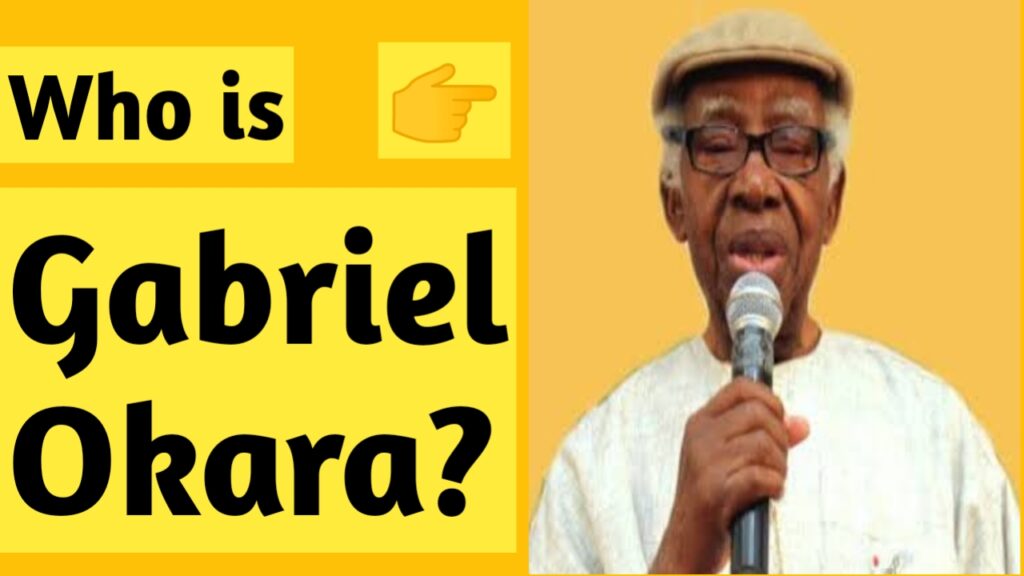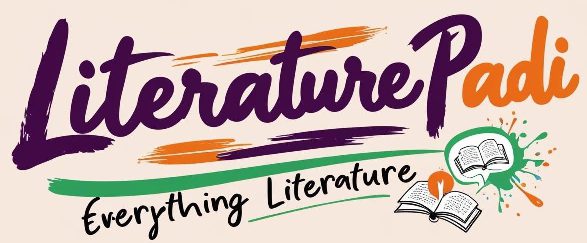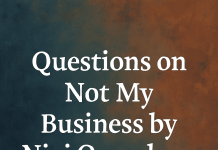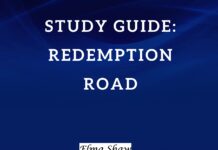🎥 We’re cooking something delicious for you on our YouTube channel. In the coming days, you will learn SSCE literature texts like you're in class 📚✍🏽
Be part of this new journey we are about to embark on.
🔔 Subscribe Now
What is “Once Upon a Time” about?
“Once Upon a Time” by Gabriel Imomotimi Okara is a poem that explores the loss of genuine emotions like laughter, warmth in human interactions, and sincerity of expressions due to societal pressures. In the poem, the poetic persona reminisces about a time when people laughed and connected sincerely. He pits this time past against now, when there is a facade of polite pleasure without genuine emotions. He yearns to unlearn these artificial behaviours and relearn the authentic, heartfelt expressions that come with youthful innocence.
What We Know about the Poet

Gabriel Imomotimi Okara was a renowned Nigerian poet and novelist. He was born on April 24, 1921, in Bumoundi, Nigeria.
One of Okara’s most famous works is his award-winning poetry collection titled The Fisherman’s Invocation. In this collection, Okara reflects on various themes, such as the clash between traditional African culture and Western influences, the complexities of human existence, and the search for identity.
He has written such poems as “Once Upon a Time,” where he portrays the loss of authenticity and sincerity in human interactions in a changing society. Another is “Piano and Drums,” where he examines the cultural conflict between African tradition in its simplicity and European values in their complex modern ways. In between these is the confused modern African man, who is at an impasse as to where he stands.
Apart from poetry, Okara was also known for his novel, The Voice. Gabriel Okara passed away on March 25, 2019. He left behind an impressive oeuvre of literary works.
Analysis of “Once Upon a Time”
“Once Upon a Time” is a forty-three-line poem by Gabriel Okara that satirises the erosion of genuine human connections and emotions in our society. The poem uses vivid imagery to contrast the past and the present and to explain why there is a loss of sincerity, warmth, and authenticity in human interactions.
The poet persona reminisces about a time when laughter came from the heart and the eyes, a signification of the genuine joy and connection people once shared. However, this authenticity has been replaced by a hollow formality where laughter is merely a display of teeth and handshakes lack heart and warmth. The symbolism of “ice-block-cold eyes” and “empty pockets” is not lost on us. The noun phrases symbolise a lack of empathy and emotional depth in contemporary interactions.
Expressions like “feel at home!” and “come again,” followed by closed doors, spell out the superficiality and insincerity of societal niceties. The poet persona admits that he has adapted to this artificial environment by donning various masks (in this context, different faces) to fit into different social situations. Underneath these masks, genuine emotions and expressions have been stifled.
For a change, the poet persona desires a return to a more authentic self and to rediscover the lost ability to genuinely laugh, connect, and express emotions without pretence. He longs to recapture the innocence and authenticity that have been lost with the passage of time; hence, his plea to the younger generation:
“So show me, son, how to laugh; show me how I used to laugh and smile once upon a time when I was like you.”
“Once Upon a Time” is therefore a poem that criticises a society where genuine emotions are sacrificed for the sake of conformity.

Stanza by Stanza Analysis
“Once Upon a Time” by Gabriel Okara is a free verse poem of forty-three (43) lines divided into seven stanzas with irregular line lengths and no set rhyme scheme. The first four stanzas of the poem have six lines each, while stanzas five, six, and seven have eight, seven, and four lines, respectively.
Stanza One
The poem begins with a kind of nostalgic narration by the speaker to his son. This narration fits into the African story-telling fashion where community elders tell children stories from time past and folktales to drive home a lesson or two.
In this stanza, the speaker nostalgically reminisces about a past where people laughed with their hearts and eyes. He remembers a time when there was authenticity and sincerity in their laughter. He contrasts this genuinely emotive past with the present, where laughter is merely a superficial display of “teeth” and cold, calculating eyes.
The contrast between laughter with genuine emotion (hearts and eyes) and the current state of laughter merely involving the display of teeth indicates the loss of true emotions and depth in human interactions over time. It demonstrates how outward appearances and superficial expressions have replaced genuine emotions. The description of “ice-block-cold eyes” searching behind the speaker’s shadow further corroborates the speaker’s portrayal of a sense of suspicion and lack of trust in the contemporary world.
Stanza Two
The second stanza continues the speaker’s reminiscence and the contrast between the authenticity of the past and the fakeness of the present. He reflects on the past, when people “used to shake hands with their hearts.” This metaphorical gesture symbolises genuine sincerity and heartfelt connections during interactions. However, the speaker laments that this genuine connection has vanished from contemporary society.
The stanza contrasts this heartfelt handshake peculiar to the past with the present, where handshakes lack sincerity. The speaker puts this concisely in line 10, “Now they shake hands without hearts.”
The mention of “left hands search[ing] my empty pockets” in lines 11–12 hints at a superficial motive behind these interactions. It points at the materialistic and self-serving nature of contemporary society, which contrasts starkly with the sincerity of the past.
Stanza Three
In the third stanza, the speaker continues to depict the contrast between the past and the present in terms of hospitality and acceptance. The stanza features the phrases “Feel at home!” and “Come again,” which traditionally convey warmth and genuine hospitality.
The speaker is emphatic about how when you visit people these days, they make you feel welcomed and are always eager to show their willingness to host you the next time.
However, the speaker experiences a paradoxical situation where these phrases lose their authenticity upon repeated visits. The repetition of visits leads to a sense of rejection, as evident in lines 17–18: “there will be no thrice—for then I find doors shut on me.”
In other words, there is a disparity between the welcoming words and the actual rejection faced by the speaker upon returning. This again corroborates the speaker’s narrative about how insincere people have become with supposedly goodwill gestures and words over time. At the end of the day, these gestures and expressions mean nothing to their conveyers but formalities and societal niceties.
Stanza Four
In the fourth stanza, the speaker admits to his young listener that he has learned to adapt to this insincere world. He has learned to adopt various personas, or, in his words, “wear many faces,” to fit into different situations: “homeface, officeface, streetface, hostface, cocktailface” (lines 21–23).
Each “face” represents a different persona the speaker adopts to conform to societal expectations in various settings. “Homeface” is the kind of facial expression he maintains at home; “officeface” is the one for work; “streetface” is the one he adopts in the streets; “hostface” is the one he adopts while playing host to people in whatever capacity; and “cocktailface” is meant for cocktail parties.
The use of “conforming smiles like a fixed portrait smile” (lines 23–24) speaks volumes about the artificiality and lack of genuineness in these expressions. The comparison to a fixed portrait smile also indicates that these smiles are rehearsed and devoid of genuine emotion.
This stanza again stresses the disconnect between outward appearances and inner emotions.
Stanza Five
The speaker further tells his audience about other things he has learned in the process of his adaptation to societal norms. He reveals the extent to which he has evolved in his use of insincere gestures and expressions.
One thing we shouldn’t overlook here is that in the first three stanzas, the speaker uses the third-person plural pronoun “they” and its equivalents to indicate people in contemporary society who mask their emotions and true feelings in the name of conforming to society. However, right from stanza four, he has started to use the first-person singular pronoun “I” to admit that he is part of the folly too. He has learned to mask his emotions and true feelings.
He admits to having learned to fake laughter by only showing his teeth and to shake hands without laughter. He admits to having mastered the same acts of deception he mentioned people do in the first three stanzas of the poem.
The speaker has learned to use expressions like “goodbye” when he means “good-riddance,” “glad to meet you” when he is actually not glad, and “it’s been nice talking to you” after being bored.
These expressions depict the disconnect between the speaker’s true feelings and the socially expected responses. They reflect the speaker’s adaptation to societal norms, wherein he has learned to mask his true emotions and convey socially acceptable sentiments, regardless of their authenticity.
Stanza Six
In this stanza, the speaker expresses a longing to revert to his former, more authentic self: “I want to be what I used to be when I was like you.” He wants to go back to the genuine love and emotions adulthood has robbed him of.
He expresses a deep desire to shed the “muting things” he has learned and reclaim the simple, genuine joy and honesty of his childhood. He wants to laugh because he is happy, not just show his “teeth like a snake’s bare fangs.”
Stanza Seven
The speaker makes a direct plea to the son to show him how he used to laugh when he was his age. He sees in his son the chance to rediscover genuine emotions and connections. This is not unconnected with his son’s puerile innocence and the fact that, at that young age, his son has no business with a world shrouded in masks and facades. At that stage of his life, the son freely expresses his emotions without any forethought or afterthought about conforming to society.
The father sees in his son what he himself has lost to society. This is why he implores his son to show him how to laugh and smile genuinely. The speaker harks back to a time when he, like the son, experienced unfiltered, sincere emotions in his expressions.
This stanza thus captures the core essence of the poem—a longing to break free from the societal constraints that have led to artificiality and a return to a more genuine and heartfelt way of experiencing emotions and interactions.
Figures of Speech in “Once Upon a Time”
There are various figures of speech in Gabriel Okara’s “Once Upon a Time.” We shall run through some of them in subsequent paragraphs.
Metaphor
“ice-block-cold eyes” (l. 5) “homeface” (l. 21) “officeface, streetface, hostface,” (l. 22) “cocktailface” (l. 23)
Simile
(l. 20-21) “. . . wear many faces like dresses..." “like a fixed portrait smile” (l. 24) “. . . like a snake’s bare fangs” (l. 39)
Irony
There is an instance of irony in lines 28–29, where the speaker says the opposite of what is meant:
I have also learned to say, “Goodbye,” when I mean “Good-riddance”;
This stresses the disparity between what is said and what is truly meant.
Alliteration
“But believe me, son” (l. 33) “So show me, son,” (l. 40)
Allusion
Literary allusion is evident in the poet’s usage of the expression “once upon a time” in lines 1 and 43. The formulaic expression alludes to the beginnings of traditional fairy tales and storytelling, which are common elements in literature and folklore.
Repetition
The poet repetitively uses the phrase “Once upon a time”—first in line 1 and then in line 43—to create a sense of nostalgia. He also repeats the word “laugh” eight times in the poem (in lines 2, 3, 4, 26, 38 (twice), 41, and 42). “Shake hands” was repeated three times in the poem too (in lines 8, 10, and 27).
Enjambment
There is a prominent use of enjambments across the lines of the poem. There are many instances where a message unit is made within a grammatical sentence broken into a couple of lines in the poem. Stanza 3 and stanza 7 are perfect examples of the continuation of sentences across lines. For the former, the sentence begins with “feel” in line 13 and runs through to line 18. For the latter, the sentence begins with “so” in line 40 and runs through to line 43, where it ends.
Stanza 3:
“Feel at home!” “Come again”; they say, and when I come again and feel at home, once, twice, there will be no thrice — for then I find doors shut on me.
Stanza 7:
So show me, son, how to laugh; show me how I used to laugh and smile once upon a time when I was like you.
Tone of “Once Upon a Time”
The tone of the poem is introspective and contemplative. The speaker engages in deep reflection on the nature of human relationships and the societal changes that have led to the erosion of authenticity and emotional connection.
There is an underlying tone of sorrow and resignation in the poem. The speaker grapples with the realization that genuine human interaction has been replaced by superficiality and insincerity. However, there is also a glimmer of hope as the speaker expresses a desire to reclaim the authenticity and emotional warmth of the past.
Mood of “Once Upon a Time”
The mood of the poem is reflective and sombre. The speaker reflects on a time in the past when human interactions were genuine and heartfelt, contrasting it with the present reality of superficiality and emotional detachment. There is a sense of longing for the innocence and authenticity of the past, which stands in stark contrast to the disillusionment and alienation experienced in the present.
“Once Upon a Time” in Four Sentences
The positions of the poetic persona in Gabriel Okara’s “Once Upon a Time” can be summed up into four sentences:
- The poetic persona compares the genuine laughter and heartfelt interactions of his childhood with the cold, fake smiles and insincerity of adulthood.
- He criticises the superficiality and hidden agendas present in social interactions, where people say one thing but mean another.
- He feels jaded and disconnected from others due to these experiences, and
- He longs to reclaim his true self and rediscover the ability to connect with others in a genuine way.
Premium PDF
We have a study guide made just for you to aid your understanding of Gabriel Okara’s poem. The 18-page premium study guide has a touch of finesse you can only find on Literature PADI. Download the entire Once Upon a Time study guide as a printable PDF now!

Also in Similar Categories
- Poem: “Once Upon a Time” by Gabriel Okara
- Themes in Gabriel Okara’s “Once Upon a Time”
- 2026–2030 Recommended Literature Texts For WAEC and NECO SSCE
Receive Literary Updates through our Social Media Channels:
- WhatsApp: Literature PADI
- Telegram: Literature PADI
- YouTube: @literaturepadi
- Facebook: Literature PADI













I love it
It’s good
Can I get the pdf for them
Thanks for the feedback. You can get the PDF on our Selar store. 👍🏿